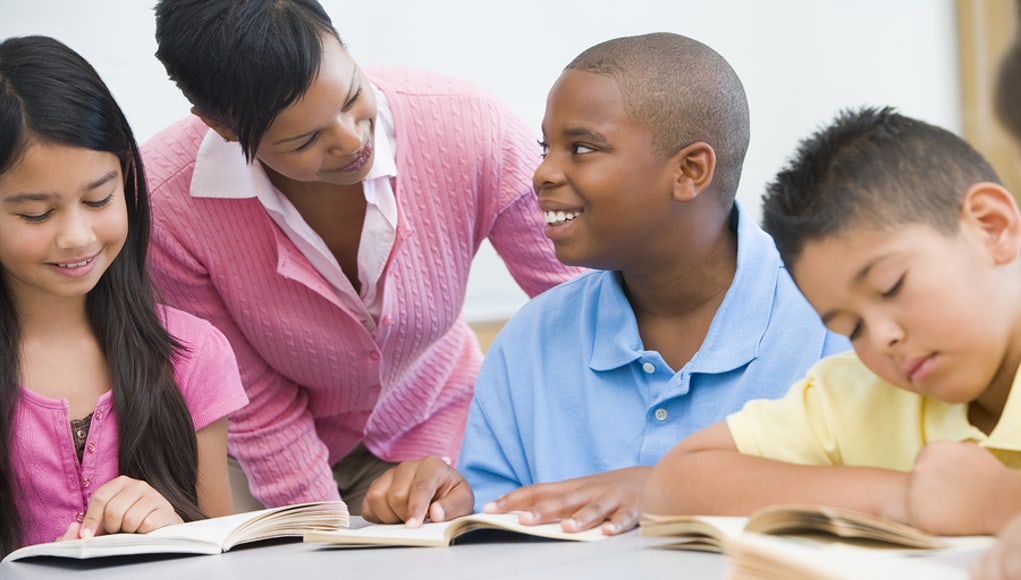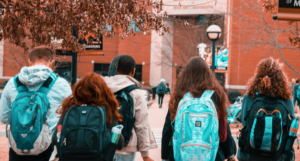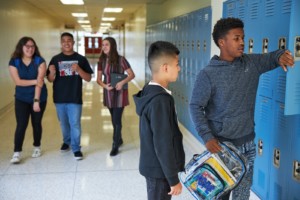7 Ways to Build Strong Relationships with Students

When I began my teaching career, I am not sure I really understood the power of relationships in helping students connect and achieve at school. I was 22-years-old and my age made the relationship development easier and harder all at the same time. I taught at the high school level and the majority of my students were ages 16-18. Hence, they viewed me almost like a peer. I had to establish myself as the adult, the leader, and therefore my focus was on creating a positive relationship with some distance from my students.
As with all of us, time makes us age and so our relationships change as we age. My career took me on the journey from classroom teacher to building and central officer administrator. However, my career journey was in the reverse order of most. I did “time” in central office before my building based experience. My last building based experience taught me the most about establishing relationships with students. I had the pleasure of serving as a K-12 building principal in a school for students with special needs, primarily students with emotional instability and frequent outbursts.
As the leader of a building, everything you do serves as role model for the rest of the staff. Therefore, creating positive relationships with the students was my full-time job. We had a very transient population and so new students came to our school at least three to four times per month. I never knew how true the saying is that one child can really change the dynamic of a classroom until this building experience.
Andrew was one of our students. He was in the fifth grade when I met him for the first time. He was not a particularly strong academic student but he had a caring heart. However, he could also create quite a disruption. Andrew and I established a pretty quick bond. We both liked animals and so we would talk about them frequently. Andrew’s response to getting into trouble was quite fascinating and really demonstrated the power of relationships. Every time he got into trouble he would literally run to the main office to find me. If I wasn’t there, he would run through the building to try and find me – the principal. Who runs to the principal when they are in trouble?
We tried everything we could to break this pattern. We talked about not letting him see me unless he was doing what he was supposed to. However, the day they locked my door and told him he couldn’t see me because he was in trouble again didn’t stop him. He went outside, walked to my office, pushed open the emergency window and came in and said, “Miss, I need to talk to you.” Clearly, Andrew needed our interaction to get through that moment. In the end, we worked with Andrew on asking for me instead of running to me and we did eventually get there. Andrew was truly a catalyst for our conversations about the importance of developing relationships.
As a school community, we engaged in intensive study of the work of Jeffrey Benson around the need for resiliency in adults that can create solid relationships with students. His article on “100 Repetitions” permeated our discussions. We believed that each of us had to try and make a connection and at some point, someone would be the 100th try that got the relationship going. So what did our repetitions look like?
1. Greeting students at the door every day by name. It is in this brief two-second interaction that a student knows you know who they are. You also get to know their tone or lack of response and are able to gauge who needs more immediate attention and who is just ready to sit down and get to work.
2. End each lesson with a good-bye. Stand at the door (or at least close to it) and engage in saying “good-bye”. The thought here is you don’t leave someone’s home without saying goodbye, so why would you let someone leave your classroom without a personal interaction?
3. Ask questions. We asked lots of questions of our students. We wanted to learn more about them and their home lives. We asked these questions as we could and then we shared what we knew with each other at team meetings. Between all of us, we usually were able to put together the essence of each student’s home life.
4. Each day is a new day without grudges. We had to learn to let yesterday be yesterday and accept today as a new day. Relationships ebb and flow and no one likes to start a new day reliving what happened yesterday. As the building leader, I had to model this over and over. That doesn’t mean students didn’t have natural consequences from their prior choices, but they didn’t change our relationship. This really worked. No one exemplified the power of this more than Andrew. He knew that every day was a new day with me. I held no grudges. He really responded to the new day theory (I think at times he wished he had a “do-over” button, too).
5. We meet you where you are. So often as adults we command students come to us into our space, and we then attend to the relationship. We instead went to the students. We spent countless hours on the floor of the hallways engaged in conversations with students. When you force the location of the conversation, you are creating a power source for yourself. When you meet students where they are, you provide them with the power source – controlling the location. I learned the most about the students during those impromptu conversations in the location of their choice.
6. We treat you like you are our own child. As a leader, I often asked the faculty and staff: if that were your child, how would you want them to be treated? What would you want the adults to say or do? As a family member, what would you want to know? So often, we treat other people’s children differently than we treat our own. At times, that may be a good thing, but in general, we have differing expectations for our students than we do for our children. We need to remember that the student is someone’s child. I used to remind the staff (and myself) that families send us the best student they have every day. One of my favorite sayings around this was: “They don’t keep the good ones home and send us the rest!”
7. Don’t take yourself so seriously. Students want to have fun in school. Learning can be fun. Students migrate to the adults in the building who care for them, are fun and have expectations for them. We have to be fun sometimes. We have to be able to laugh at ourselves. I recall as a first-year teacher falling in the middle of the hallway, right before homeroom and having my skirt go over my head. The hallway was packed with students and faculty. Everyone gasped and then asked me if I was all right. I said yes and started to laugh. Everyone else laughed too. The students thought that was great. They commented on it all day–not on the fall but the fact that I laughed at myself.
In the end, every relationship is different because every person and every situation is different. No two people can create the same relationship with a student, but everyone can create a relationship. There are thousands of Andrews in schools, and I am grateful to the other adults who were the 99 repetitions before me with Andrew.
We must believe in the power of the relationships, continue to strive for them and never forget the power of 100 repetitions.
For more, see:
- School Culture and Relationships Thrive with a 5:1 Positivity Ratio
- 7 Ways to Build Better Relationships with Students
- 3 Ways to Build and Implement Successful Classroom Relationships
Dr. Margy Jones-Carey is an Assistant Professor and Program Director for the Educational Leadership Program at St. Bonaventure University. Follow her on Twitter: @DrMargy
Stay in-the-know with all things EdTech and innovations in learning by signing up to receive the weekly Smart Update.





0 Comments
Leave a Comment
Your email address will not be published. All fields are required.